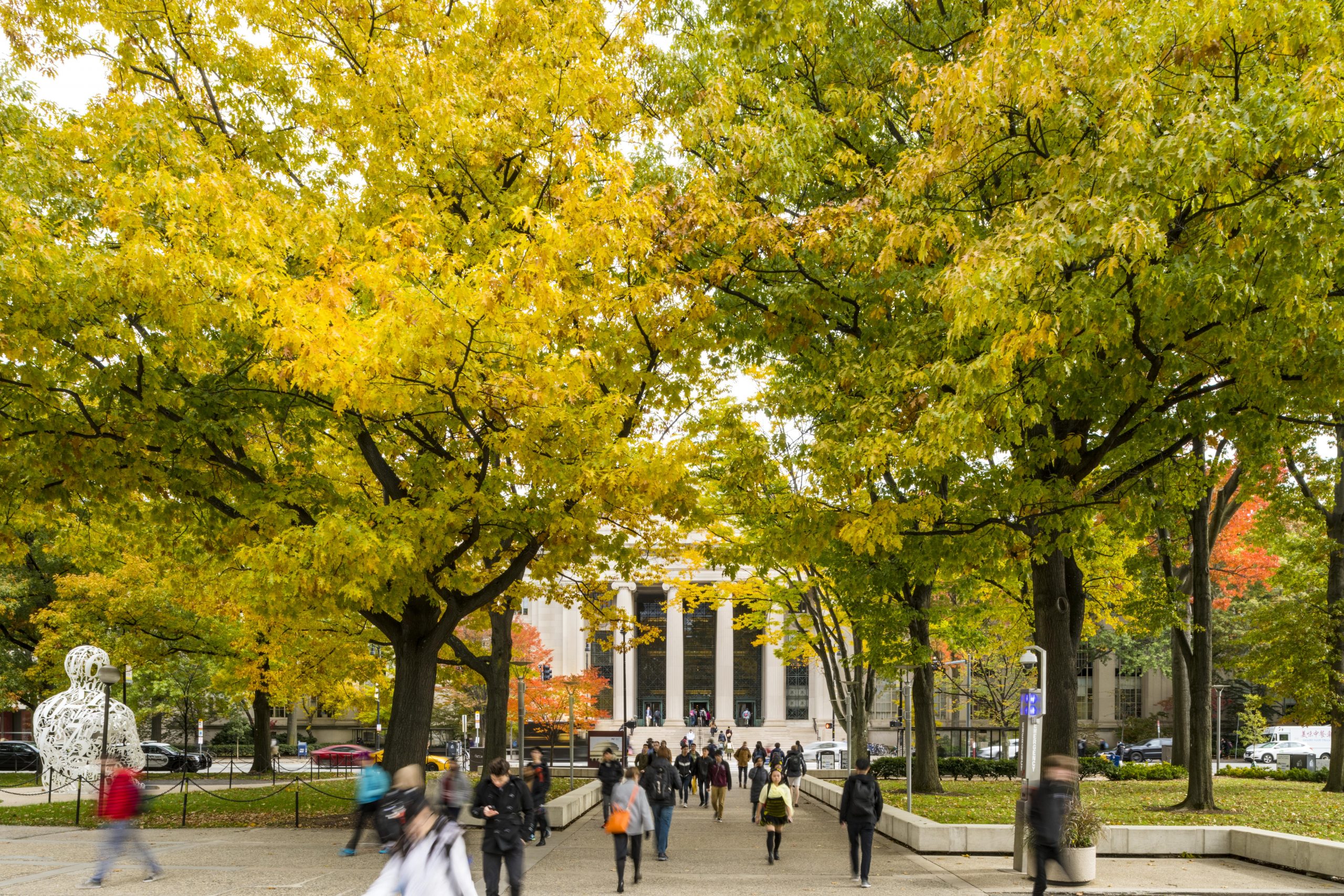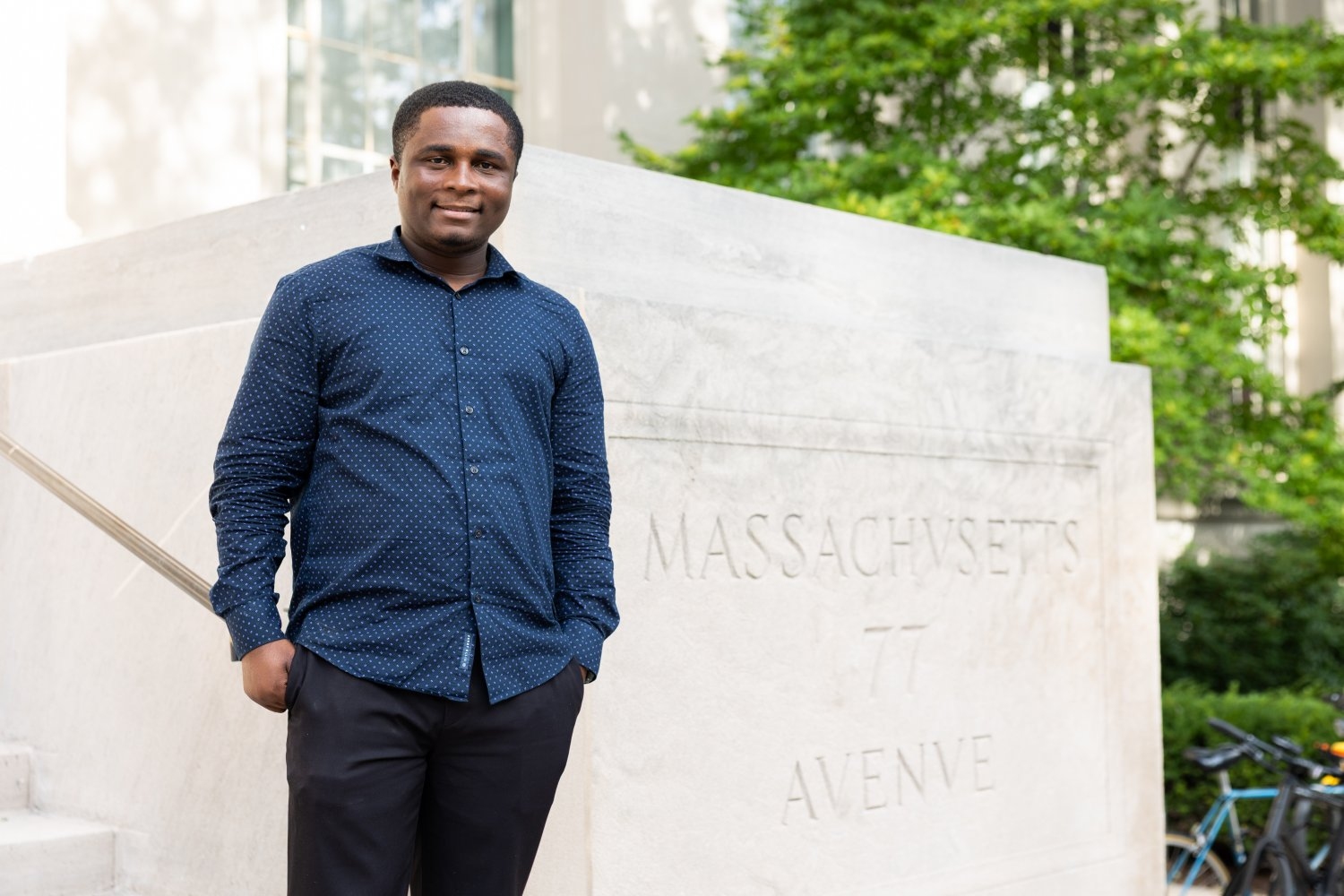Climate and sustainability classes expand at MIT
MIT offers over 120 undergraduate classes related to sustainability, a sign of growing interest in the environmental impacts of their fields.
In fall 2019, a new class, 6.S898/12.S992 (Climate Change Seminar), arrived at MIT. It was, at the time, the only course in the Department of Electrical Engineering and Computer Science (EECS) to tackle the science of climate change. The class covered climate models and simulations alongside atmospheric science, policy, and economics.
Ron Rivest, MIT Institute Professor of Computer Science, was one of the class’s three instructors, with Alan Edelman of the Computer Science and Artificial Intelligence Laboratory (CSAIL) and John Fernández of the Department of Urban Studies and Planning. “Computer scientists have much to contribute to climate science,” Rivest says. “In particular, the modeling and simulation of climate can benefit from advances in computer science.”
Rivest is one of many MIT faculty members who have been working in recent years to bring topics in climate, sustainability, and the environment to students in a growing variety of fields. And students have said they want this trend to continue.
“Sustainability is something that touches all disciplines,” says Megan Xu, a rising senior in biological engineering and advisory chair of the Undergraduate Association Sustainability Committee. “As students who have grown up knowing that climate change is real and witnessed climate disaster after disaster, we know this is a huge problem that needs to be addressed by our generation.”
Expanding the course catalog
As education program manager at the MIT Environmental Solutions Initiative, Sarah Meyers has repeatedly had a hand in launching new sustainability classes. She has steered grant money to faculty, brought together instructors, and helped design syllabi — all in the service of giving MIT students the same world-class education in climate and sustainability that they get in science and engineering.
Her work has given Meyers a bird’s-eye view of MIT’s course offerings in this area. By her count, there are now over 120 undergraduate classes, across 23 academic departments, that teach climate, environment, and sustainability principles.
“Educating the next generation is the most important way that MIT can have an impact on the world’s environmental challenges,” she says. “MIT students are going to be leaders in their fields, whatever they may be. If they really understand sustainable design practices, if they can balance the needs of all stakeholders to make ethical decisions, then that actually changes the way our world operates and can move humanity towards a more sustainable future.”
Some sustainability classes are established institutions at MIT. Success stories include 2.00A (Fundamentals of Engineering Design: Explore Space, Sea and Earth), a hands-on engineering class popular with first-year students; and 21W.775 (Writing About Nature and Environmental Issues), which has helped undergraduates fulfill their HASS-H (humanities distribution subject) and CI-H (Communication Intensive subject in the Humanities, Arts, and Social Sciences) graduation requirements for 15 years.
Expanding this list of classes is an institutional priority. In the recently released Climate Action Plan for the Decade, MIT pledged to recruit at least 20 additional faculty members who will teach climate-related classes.
“I think it’s easy to find classes if you’re looking for sustainability classes to take,” says Naomi Lutz, a senior in mechanical engineering who helped advise the MIT administration on education measures in the Climate Action Plan. “I usually scroll through the titles of the classes in courses 1, 2, 11, and 12 to see if any are of interest. I also have used the Environment & Sustainability Minor class list to look for sustainability-related classes to take.
“The coming years are critical for the future of our planet, so it’s important that we all learn about sustainability and think about how to address it,” she adds.
Working with students’ schedules
Still, despite all this activity, climate and sustainability are not yet mainstream parts of an MIT education. Last year, a survey of over 800 MIT undergraduates, taken by the Undergraduate Association Sustainability Committee, found that only one in four had ever taken a class related to sustainability. But it doesn’t seem to be from lack of interest in the topic. More than half of those surveyed said that sustainability is a factor in their career planning, and almost 80 percent try to practice sustainability in their daily lives.
“I’ve often had conversations with students who were surprised to learn there are so many classes available,” says Meyers. “We do need to do a better job communicating about them, and making it as easy as possible to enroll.”
A recurring challenge is helping students fit sustainability into their plans for graduation, which are often tightly mapped-out.
“We each only have four years — around 32 to 40 classes — to absorb all that we can from this amazing place,” says Xu. “Many of these classes are mandated to be GIRs [General Institute Requirements] and major requirements. Many students recognize that sustainability is important, but might not have the time to devote an entire class to the topic if it would not count toward their requirements.”
This was a central focus for the students who were involved in forming education recommendations for the Climate Action Plan. “We propose that more sustainability-related courses or tracks are offered in the most common majors, especially in Course 6 [EECS],” says Lutz. “If students can fulfill major requirements while taking courses that address environmental problems, we believe more students will pursue research and careers related to sustainability.”
She also recommends that students look into the dozens of climate and sustainability classes that fulfill GIRs. “It’s really easy to take sustainability-related courses that fulfill HASS [Humanities, Arts, and Social Sciences] requirements,” she says. For example, students can meet their HASS-S (social sciences sistribution subject) requirement by taking 21H.185 (Environment and History), or fulfill their HASS-A requirement with CMS.374 (Transmedia Art, Extraction and Environmental Justice).
Classes with impact
For those students who do seek out sustainability classes early in their MIT careers, the experience can shape their whole education.
“My first semester at MIT, I took Environment and History, co-taught by professors Susan Solomon and Harriet Ritvo,” says Xu. “It taught me that there is so much more involved than just science and hard facts to solving problems in sustainability and climate. I learned to look at problems with more of a focus on people, which has informed much of the extracurricular work that I’ve gone on to do at MIT.”
And the faculty, too, sometimes find that teaching in this area opens new doors for them. Rivest, who taught the climate change seminar in Course 6, is now working to build a simplified climate model with his co-instructor Alan Edelman, their teaching assistant Henri Drake, and Professor John Deutch of the Department of Chemistry, who joined the class as a guest lecturer. “I very much enjoyed meeting new colleagues from all around MIT,” Rivest says. “Teaching a class like this fosters connections between computer scientists and climate scientists.”
Which is why Meyers will continue helping to get these classes off the ground. “We know students think climate is a huge issue for their futures. We know faculty agree with them,” she says. “Everybody wants this to be part of an MIT education. The next step is to really reach out to students and departments to fill the classrooms. That’s the start of a virtuous cycle where enrollment drives more sustainability instruction in every part of MIT.”





